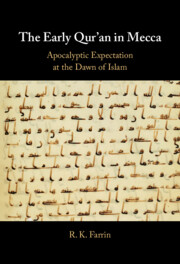Refine listing
Actions for selected content:
1299800 results in Books

The Acquisition of Relativization
- Coming soon
-
- Expected online publication date:
- February 2026
- Print publication:
- 28 February 2026
-
- Book
- Export citation

Early Globalism and Chinese Literature
- Coming soon
-
- Expected online publication date:
- February 2026
- Print publication:
- 28 February 2026
-
- Element
- Export citation

John Dewey's Human Nature and Conduct
- A Centennial Handbook
- Coming soon
-
- Expected online publication date:
- February 2026
- Print publication:
- 28 February 2026
-
- Book
- Export citation

Nineteenth-Century Literature in Transition: The 1800s
- Coming soon
-
- Expected online publication date:
- February 2026
- Print publication:
- 28 February 2026
-
- Book
- Export citation

A Jurisprudence of Conversations
- Law, Life and Feminism in Post-colonial India
- Coming soon
-
- Expected online publication date:
- February 2026
- Print publication:
- 28 February 2026
-
- Book
- Export citation

Sexual Harassment between Doctors
- Healing Medical Cultures Around the World
- Coming soon
-
- Expected online publication date:
- February 2026
- Print publication:
- 28 February 2026
-
- Book
- Export citation

The Early Qur'an in Mecca
- Apocalyptic Expectation at the Dawn of Islam
- Coming soon
-
- Expected online publication date:
- February 2026
- Print publication:
- 28 February 2026
-
- Book
- Export citation

Pablo Neruda in Context
- Coming soon
-
- Expected online publication date:
- February 2026
- Print publication:
- 28 February 2026
-
- Book
- Export citation

Handbook of CTG Interpretation
- From Patterns to Physiology
- Coming soon
-
- Expected online publication date:
- February 2026
- Print publication:
- 28 February 2026
-
- Book
- Export citation

The Cambridge Introduction to the Old Testament
- Coming soon
-
- Expected online publication date:
- February 2026
- Print publication:
- 28 February 2026
-
- Textbook
- Export citation

Leaping Decolonization
- North Africa in the Global 1960s and 1970s
- Coming soon
-
- Expected online publication date:
- February 2026
- Print publication:
- 28 February 2026
-
- Book
- Export citation

Testimony, Faith and Religion in Early Modern English Literature
- Making Belief
- Coming soon
-
- Expected online publication date:
- February 2026
- Print publication:
- 28 February 2026
-
- Book
- Export citation

Small Probabilities and High Stakes
- Coming soon
-
- Expected online publication date:
- February 2026
- Print publication:
- 28 February 2026
-
- Element
- Export citation

The Evolution of Western Thought
- A New History, from Antiquity to the Early Modern Era
- Coming soon
-
- Expected online publication date:
- February 2026
- Print publication:
- 31 January 2026
-
- Textbook
- Export citation
Chapter 3 - The 1960s
- from Part I - The Dream of Imperial Ruins
-
-
- Book:
- The Cambridge Companion to British Utopian Literature and Culture since 1945
- Published online:
- 18 December 2025
- Print publication:
- 31 January 2026, pp 55-72
-
- Chapter
- Export citation
Contents
-
- Book:
- The Cambridge Companion to British Utopian Literature and Culture since 1945
- Published online:
- 18 December 2025
- Print publication:
- 31 January 2026, pp v-vi
-
- Chapter
- Export citation
Chapter 2 - Cosy Catastrophes
- from Part I - The Dream of Imperial Ruins
-
-
- Book:
- The Cambridge Companion to British Utopian Literature and Culture since 1945
- Published online:
- 18 December 2025
- Print publication:
- 31 January 2026, pp 37-54
-
- Chapter
- Export citation
Copyright page
-
- Book:
- Hume's <i>Dialogues Concerning Natural Religion</i>
- Published online:
- 25 December 2025
- Print publication:
- 31 January 2026, pp iv-iv
-
- Chapter
- Export citation
Chapter 14 - Hume on Suicide, Superstition and Morality
- from Part II - Other Writings on Religion
-
-
- Book:
- Hume's <i>Dialogues Concerning Natural Religion</i>
- Published online:
- 25 December 2025
- Print publication:
- 31 January 2026, pp 260-278
-
- Chapter
- Export citation
Chapter 13 - Some Dialectics of Utopia in China Miéville’s Bas-Lag Trilogy
- from Part IV - Case Studies
-
-
- Book:
- The Cambridge Companion to British Utopian Literature and Culture since 1945
- Published online:
- 18 December 2025
- Print publication:
- 31 January 2026, pp 270-287
-
- Chapter
- Export citation
